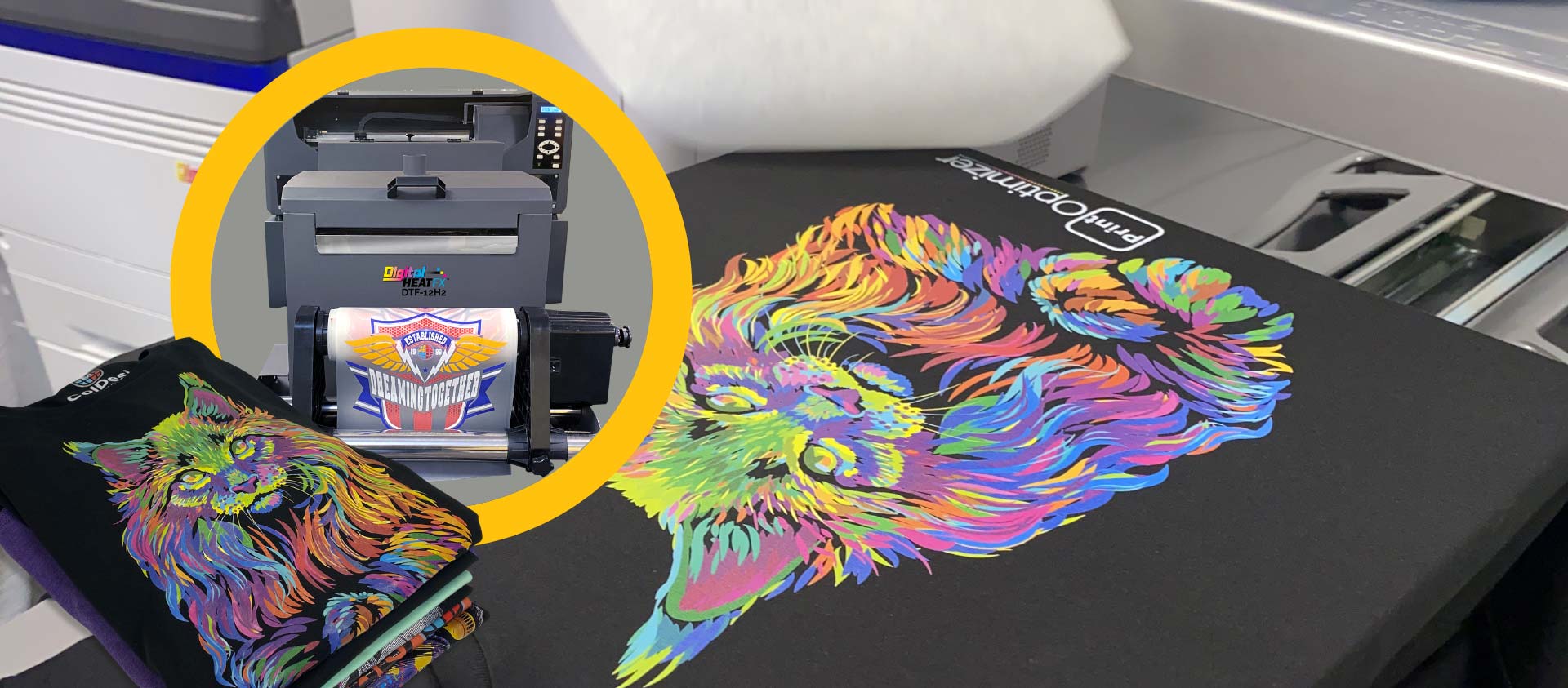Discovering the Art of DTF Printing: Techniques and Applications Unveiled
Ultimate Guide to DTF Printing Techniques for Magnificent Textile Layouts
Starting the journey of grasping DTF printing methods can open up a world of possibilities for producing aesthetically exciting fabric designs. As the textile industry remains to progress, remaining in advance of the curve with innovative printing methods is vital. In this overview, we will explore the intricate details of DTF printing, from understanding the essential essentials to unraveling progressed shade strategies that can elevate your layouts to new heights. Keep tuned as we delve right into the nuances of choosing the right products, perfecting the printing procedure, and overcoming typical obstacles to accomplish magnificent results.
Understanding DTF Printing Essentials
DTF printing, a procedure that includes transferring styles from an unique film to fabrics utilizing heat and pressure, develops the foundation of fabric printing methods. This innovative approach permits top quality, vibrant styles to be perfectly moved onto various textiles with precision and information. The initial step in DTF printing involves producing or choosing a design that will be published onto the fabric. This layout is after that printed onto an unique film making use of a DTF printer, which utilizes specific dyes or pigments to make certain color precision and resilience.
When the layout is printed on the movie, it is after that meticulously placed onto the textile, guaranteeing correct alignment and positioning. The next critical action involves using heat and pressure using a heat press equipment. This process activates the dyes or pigments on the movie, creating them to sublimate and bond with the fabric fibers permanently. The outcome is a stunning, lasting fabric style that is cleanable, adaptable, and resistant to fading. Generally, recognizing the essentials of DTF printing is important for understanding this modern-day fabric printing technique.
Selecting the Right Textile Products
Having established the foundational principles of DTF printing techniques for textile styles, the next essential factor to consider exists in selecting the appropriate fabric products to complement this cutting-edge process efficiently. Furthermore, the stretchability of these materials can suit the warmth transfer process entailed in DTF printing without distorting the layout. By picking the appropriate textile materials, developers can make the most of the possibility of DTF printing to develop long-lasting and magnificent textile layouts.

Grasping the Printing Refine
To succeed in DTF printing techniques for textile designs, mastering the printing procedure is important for achieving consistent and high-grade results. The printing process in DTF includes numerous essential actions that need precision and attention to detail. Preparing the art work for printing is vital. This includes making sure the style is appropriately sized and placed for the textile. Next off, the layout is published onto an unique DTF movie utilizing a suitable printer with the appropriate setups to attain optimum shade vibrancy and clearness (DTF Printing). Once the design is printed, it is then transferred onto the material utilizing a warm press machine. The temperature level, pressure, and duration of warmth application should be thoroughly managed to click to read make certain proper bond of the layout to the fabric. Additionally, understanding the peeling process after warm pressing is crucial to stop any kind of damage to the layout or material. By refining each of these steps in the printing process, developers can continually generate long lasting and magnificent textile designs with DTF printing methods.
Enhancing Layouts With Color Strategies

Additionally, explore shade gradients can bring a feeling of activity and fluidness to the style. By blending colors perfectly, a gradient result can be accomplished, including a vibrant and contemporary touch to the fabric layout. Furthermore, using shade blocking techniques can produce bold and striking visuals by juxtaposing various strong colors in unique areas of the design.
Furthermore, including metal or neon shades can offer a special and attractive element to the fabric layout, making it stick out and exude a sense of vibrancy. When strategically applied, these color methods can elevate the overall visual allure of fabric styles, making them much more fascinating and remarkable.
Troubleshooting Common DTF Printing Issues
After discovering various color techniques to improve textile layouts, it is necessary to deal with usual DTF printing concerns that might develop during the manufacturing process. In addition, concerns with picture clearness and intensity can take place due to low-resolution images or inappropriate printing methods. By being conscious of these usual troubles and executing the required troubleshooting actions, you can boost the overall high quality of your DTF published textile layouts.
Conclusion
In conclusion, mastering DTF printing techniques is essential for creating spectacular textile designs. With method and focus to detail, one can produce distinct and lovely fabric layouts making use page of DTF check these guys out printing techniques.
Layouts))))
DTF printing, a procedure that includes transferring layouts from a special movie to fabrics utilizing warmth and pressure, forms the foundation of textile printing techniques.Having actually established the fundamental principles of DTF printing techniques for textile layouts, the following essential factor to consider exists in choosing the ideal textile products to match this ingenious process successfully. By picking the appropriate textile products, designers can take full advantage of the capacity of DTF printing to develop long-lasting and magnificent textile layouts.
To excel in DTF printing techniques for fabric styles, mastering the printing process is crucial for attaining high-grade and consistent results. DTF Printing. By sharpening each of these steps in the printing procedure, developers can constantly create magnificent and resilient textile layouts with DTF printing strategies